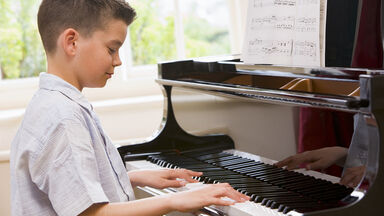The chords necessary in this part, which with its supporting bass is called the continuo, were indicated by figures; and the evanescent and delicate tones of the harpsichord; lent themselves admirably to this purpose where solo voices and instruments were concerned.
It is in the attempt to supply the place of this continuo (or _ figured bass) by definite orchestral parts that modern per formances, until the most recent times, have shown so radical an incapacity to grasp the nature of 18th-century instrumentation.
To write an account of symphonic instrumentation in any detail would be like attempting a history of emotional expression; and all that we can do here is to point out that the problem which was, so to speak, shelved by the polyphonic device of the continuo, was for a long time solved only by methods which, in any hands but those of the greatest masters, were very inartistic conventions.
These motets are usually in the vernacular and usually expect only continuo accompaniment, tho some do have optional instrumental doubling parts.
They can be played either by violin alone or with the basso continuo accompaniment which is reproduced at the bottom of every page.
